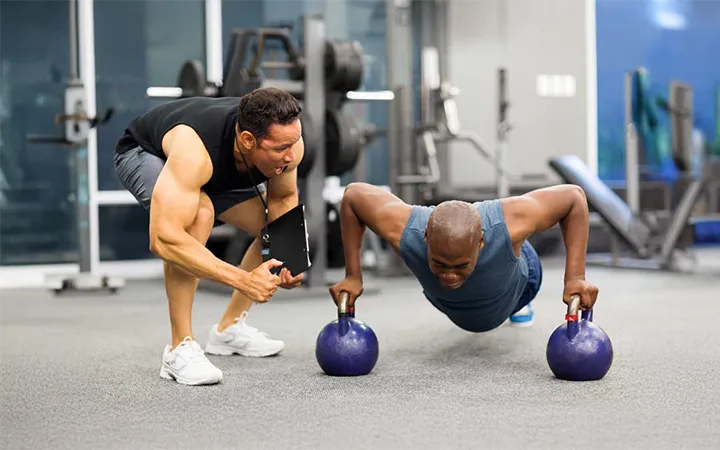In the race of daily life, we often forget the one thing that keeps us in the game—our health. Personal fitness isn’t just about looking good; it’s about feeling good, staying strong, and living free of health limitations. Imagine waking up full of energy, tackling the day with a clear mind, and never running out of breath. That’s what achieving personal fitness can do. If you’re ready to experience these benefits, let’s dive into the actionable steps you can start today.
The Building Blocks of Personal Fitness
A solid fitness foundation isn’t just one thing; it’s a mix of essential components. Here’s what you need to focus on for real results:
- Cardiovascular Endurance
This is your body’s ability to fuel itself through activity. Whether it’s a long walk, a quick run, or climbing stairs, improving cardiovascular endurance will make you feel light and agile. Start with 20 minutes of brisk walking daily, then build up to running, cycling, or even a dance class you enjoy. - Muscular Strength
Strength training isn’t just for bodybuilders—it’s for anyone who wants to stay independent and protect their body from injury. Use your body weight at first (think push-ups, squats), and as you progress, try adding weights or resistance bands. Start small, stay consistent, and watch yourself get stronger. - Muscular Endurance
This is the power to go the distance. Whether lifting groceries or holding a yoga pose, you need endurance to keep going without fatigue. Simple exercises like wall sits or planks are perfect for building endurance. Challenge yourself to hold these poses a few seconds longer each day. - Flexibility
Flexibility is your body’s range of motion, crucial for preventing injuries and staying agile. Try yoga or dynamic stretching to keep your muscles limber and ready. Flexibility training not only feels great but also eases tightness and promotes recovery. - Body Composition
This is the ratio of lean muscle to fat in your body. You don’t need a gym membership to improve this; just a balanced mix of cardio, strength training, and mindful eating. Over time, you’ll notice the difference in your energy levels, strength, and even sleep quality.
The Benefits of Getting Fit (Beyond the Physical)
Physical Health Benefits
When you exercise regularly, your body pays you back in spades. You’ll have a stronger heart, more efficient lungs, and a lower risk of lifestyle diseases like diabetes and hypertension. And guess what? The more active you are, the more calories you burn—even at rest.
Mental Health Benefits
Fitness isn’t just for your body; it’s for your mind, too. Exercise releases endorphins, your brain’s “feel-good” chemicals, which help combat stress, anxiety, and depression. The best part? It also boosts self-confidence. With each milestone, you’ll feel more capable, clear-headed, and ready to take on life.
Long-Term Benefits
Fitness is the best investment in yourself. You’re building a future where you have fewer limitations and more energy. And as a bonus, regular fitness habits promote better sleep, reduce stress, and keep you sharp as you age.
Goal-Setting: Make It Happen with a Clear Plan
Setting goals is crucial, but it’s not enough to simply think, “I want to get fit.” Here’s how to set goals that make you want to get moving every day.
1. Use SMART Goals
- Specific: Define what you want to achieve. Instead of “I want to be fit,” say, “I want to run 5K in three months.”
- Measurable: Track your progress to see improvement (e.g., track your daily steps or weekly mileage).
- Achievable: Start with goals you know you can reach.
- Relevant: Focus on goals that matter to you. Why do you want to get fit? How will it improve your life?
- Time-Bound: Give yourself a deadline. It’s motivating to know you’re working toward a real date.
2. Apply the FITT Principle
Adjust your workout by varying these:
- Frequency: Plan 3-4 workouts per week.
- Intensity: Mix it up—alternate between light, moderate, and intense workouts.
- Time: Start with short workouts and gradually increase.
- Type: Combine different exercises—strength, cardio, flexibility, and balance.
3. Celebrate Every Win
Don’t wait for the “perfect” end goal. Celebrate your first 5K, your first unassisted pull-up, or your first month of consistent workouts. Each small victory fuels motivation and reminds you of your progress.
How to Create Your Fitness Plan
Here’s the best part: you don’t need to overthink your plan to make real progress. Just follow these steps:
1. Evaluate Where You Are Now
Know your starting point. Are you new to exercise, or have you tried it before? Think about your strengths, limitations, and any health conditions. This assessment helps you set goals that work for your body.
2. Set Clear, Achievable Goals
Start small with goals that are specific and realistic. If you’re new, aim for 15 minutes of walking thrice a week, then build up as your stamina improves.
3. Stick to a Schedule
Consistency is key. Choose a time you can commit to, whether it’s mornings, lunch breaks, or evenings. Turn this time into “you time.”
4. Make Your Space Work for You
No gym membership? No problem. Set up a dedicated area in your home—a yoga mat and some light weights can go a long way. Or, find a park where you can walk or run.
5. Find Support
Don’t go it alone. Find a friend or community to share your journey. Or, consider working with a trainer to get started and build confidence.
Overcoming Challenges: Solutions for Common Obstacles
1. No Time? No Problem.
Make fitness fit into your day: walk to work, take the stairs, do a quick stretch at your desk. Small actions add up.
2. Low Motivation? Make It Fun.
Choose activities you enjoy. Whether it’s Zumba, a quick dance session, or a virtual yoga class, find something that feels less like work and more like fun.
3. Self-Doubt? Progress at Your Own Pace.
Don’t compare yourself to anyone else. Fitness is personal. Track your progress, and celebrate every step forward.
FAQs
1. How should a beginner start a fitness routine?
Start with small goals, like daily walking or yoga, and build from there. Consistency is more important than intensity at first.
2. Do I need equipment to get fit?
Not! Bodyweight exercises like squats, lunges, and push-ups are powerful on their own.
3. How often should I work out?
Aim for 3-4 days a week, balancing cardio, strength, and flexibility exercises.
4. How can I stay motivated?
Set clear goals, track your progress, and reward yourself when you hit milestones. And remember, fitness should be enjoyable!

